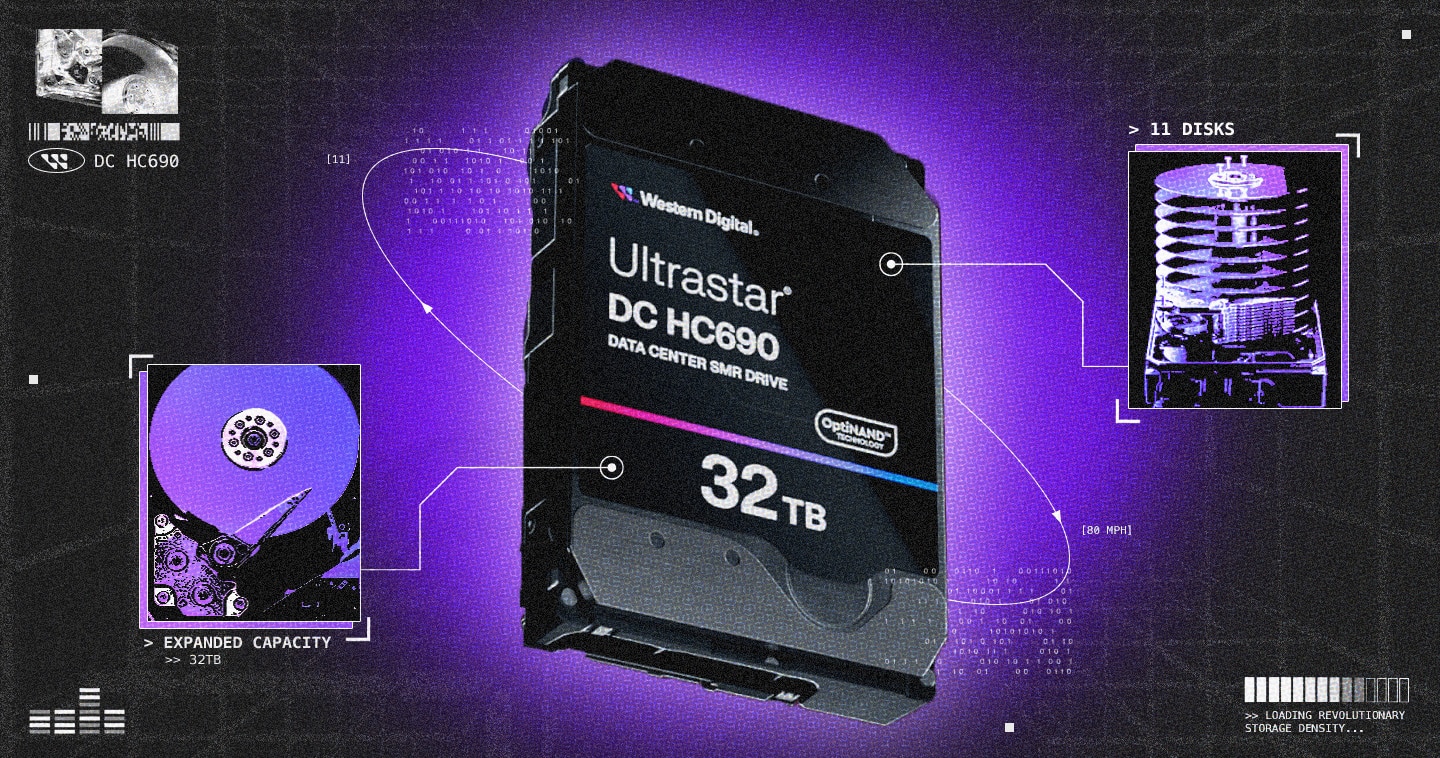Product Update: Since we published this editorial, our 22TB hard drives are now generally available. See our full line-up of 22TB hard drives by clicking here.
Building the world’s highest capacity HDDs is no small task.
Decades in the making, Western Digital introduced its industry-leading 22TB and 26TB HDDs, with a roadmap to even higher capacities, at its inaugural What’s Next Western Digital event in San Francisco.
Carl Che, CTO of the HDD business unit at Western Digital, leads the team responsible for integrating multiple innovations which have revolutionized the hard disk drive (HDD) landscape time and again.
Che is energized by innovation. In a recent LinkedIn post, he tips his hat to the breakthrough digital music device introduced in 2001, which included an ultra-thin HDD.
Che is more excited about Western Digital’s latest generation of industry-leading HDDs – the world’s highest capacity – that will help cloud providers scale to unprecedented heights and customers across industries create what’s next.
“Data storage products are becoming even more important in the zettabyte era. We are empowering our customers to realize their audacious visions – just like mini-HDDs did more than 20 years ago,” said Che in his post.
As the volume and complexity of data continues to grow, the ability to store and manage it must also evolve to keep pace. How Western Digital technologists keep up with the growth is by integrating and orchestrating multiple innovations to make increasing capacity levels possible.
“The cloud is changing the HDD market as we go from exabytes to zettabytes to keep up with cloud demands,” said Ashley Gorakhpurwalla, EVP and GM of the HDD business unit at Western Digital. “The hard drive is the device of the future that solves the cloud challenge.”
Specific to the recent 22TB and 26TB launch are the latest advances in Western Digital’s ePMR, HelioSeal®, OptiNAND™ technologies and UltraSMR – a new, denser form of SMR technology, all of which contribute to the industry’s highest capacity drives.
HDD innovation reaches cloud-scale
Last year the company shared how it reimagined the hard drive with the introduction of OptiNAND, a technology that enhances HDDs with integrations and enhancements delivered by flash embedded in the drive. Western Digital, because it has both HDD and flash businesses, is uniquely able to leverage its vertical integration across its HDD and flash to drive this innovation.
The new drives benefit from OptiNAND’s latest innovations, including the ArmorCache write cache data safety feature. ArmorCache gives customers the best of both enhanced performance when write cache is enabled and added data protection or resiliency in case of an emergency power off (EPO) when write cache is disabled.
Years of innovation led to the introduction of Western Digital’s energy-assisted perpendicular magnetic recording (ePMR) which Che has said is the biggest advance in recording technology in the past 15 years.
Western Digital engineers developed ePMR, the foundation for OptiNAND, to create higher areal density by applying energy to write bits of data closer together while reducing jitter. The technology was a promising answer to the challenge of packing more data onto an HDD platter without sacrificing performance or reliability.
Now in its second generation, with over 20 million drives shipped containing hundreds of exabytes, ePMR adds an extra magnetic field generated by a spin torque oscillator (STO) to assist in the recording process. This additional field directly applied to media pushes density even further, from 1.1TB/square inch in ePMR to now 1.3TB/square inch in ePMR2.
The new ePMR drives with OptiNAND technology now deliver unsurpassed areal density leadership in the 22TB CMR HDD on a mature 2.2TB/platter HelioSeal platform with an industry-first ten disks instead of nine. The 26TB drive delivers a whopping 2.6TB/platter.
Ali Zafar, head of hybrid infrastructure at Dropbox, says his company stores more than 800 billion pieces of content, including many different types of data. Dropbox needs to scale rapidly and efficiently.
Dropbox has adopted shingled magnetic recording (SMR) as an alternative to conventional magnetic recording (CMR). SMR stores data where the data tracks are overlapped, or “shingled,” on top of each other, like shingles on a roof. The configuration allows much higher areal density and capacity to be achieved within the same footprint.
“This additional capacity is a game changer for us,” said Zafar on stage at What’s Next Western Digital.
The introduction of UltraSMR takes the company’s leadership in SMR to the next level by innovating across data formats and architectures. UltraSMR adds large block encoding and more advanced error code correction algorithms which further increases capacity by 10% over SMR, or 20% over CMR.
Making capacity gains a reality
Ravi Pendekanti, senior vice president of HDD product management and marketing at Western Digital, said he is often asked how the company makes these impressive leaps in capacity.
“When we went from 18TB to 20TB, we chose the path of nailing the head and media technologies,” said Pendekanti. “When it came time to move to 22TB, we were able to build upon those learnings and focus on the mechanical element of adding a tenth disk.”
Increases in performance, capacity, density, and resiliency translate into TCO gains for customers.
“We’re always looking at TCO and how we can get more into the same form factor,” said Pendekanti. “This translates into things like infrastructure, the number of racks a hyperscaler can pack into a data center, changes in cooling needs, and so on.”
Orchestrating these and other technologies is what Western Digital does with its vertical integration and decades of expertise. As leaders in both HDD and flash, the company has both the materials and intellectual property in-house.
“HDD innovation is a team sport,” said Che, and our industry leading technologists leverage and synchronize these efforts, applying innovation to its current products with an eye toward future generations.
“As we continue our journey to 30+ TB, we are always looking at our innovations and how we can further push the boundaries,” said Pendekanti.



